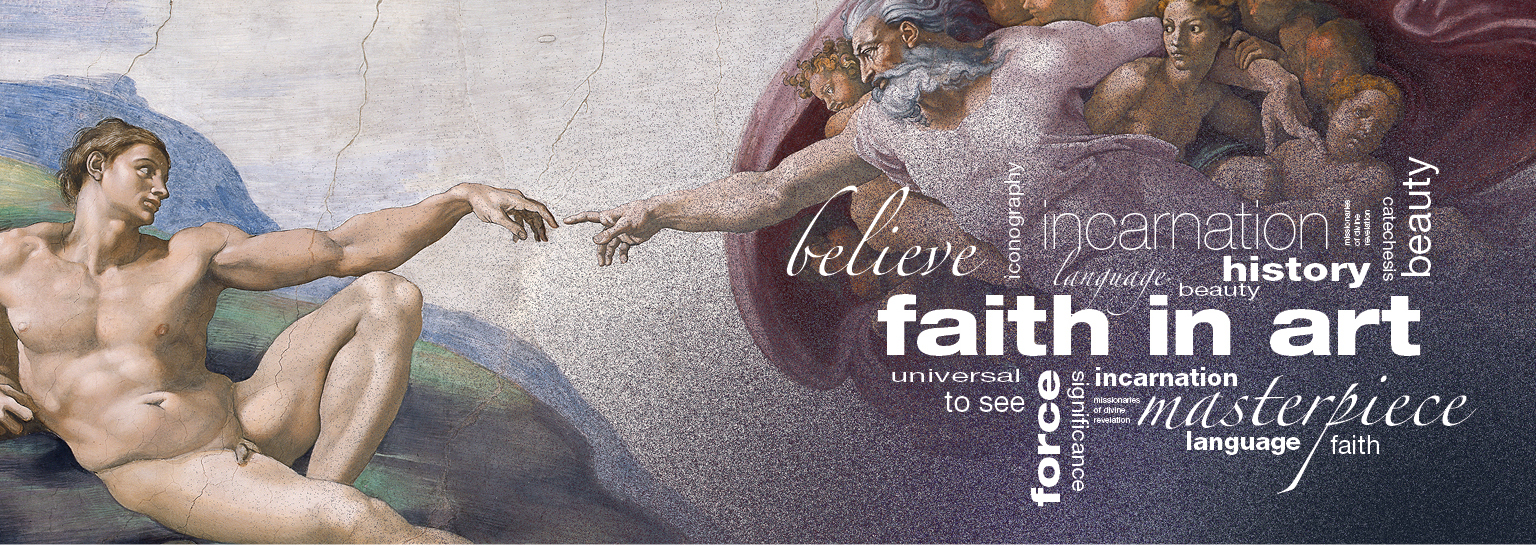 The Temptations of Christ (1480-1482) Botticelli, Sistine Chapel
The Temptations of Christ (1480-1482) Botticelli, Sistine Chapel
St Luke’s account of the temptation of Jesus in the desert is the Gospel reading on the first Sunday of Lent and it also signals the start of the penitential itinerary that will lead us to Easter Sunday.
The representation of the devil as a tempter is an embarrassing figure for artists who seem to have two opposing ways of depicting him. Some represent him in the most disgusting form possible, usually covered with hair, with horns on his forehead, wings and hooked feet. Other artists have reflected on the fact that the devil couldn’t possibly deceive Christ by appearance and so he is given a reassuring look, disguised as an angel or a monk. This was the prevailing form in Italian art during the renaissance period.
With this in mind, we have chosen the fresco of the Temptation of Christ that was painted by Sandro Botticelli in the Sistine Chapel between 1480 and 1482. We will briefly outline the composition of the fresco using the Gospel account.
In the foreground of the fresco, a Priest is ready to perform the rite of Temple Purification. This episode is a fundamental aspect of the piece becuase it emphasises the temptation of Christ, the High Priest, in the upper portion of the fresco.
 Looking at the left hand side of the fresco we do not see a desert, as in the biblical account, but a very dark forest. The devil is dressed in a habit that cannot hide his bat wings and crow’s feet and is leaning on a walking stick in the form of tau. This costume highlights the fact that the devil always tries to disguise himself in order to deceive us.
Looking at the left hand side of the fresco we do not see a desert, as in the biblical account, but a very dark forest. The devil is dressed in a habit that cannot hide his bat wings and crow’s feet and is leaning on a walking stick in the form of tau. This costume highlights the fact that the devil always tries to disguise himself in order to deceive us.
This scene is the first great temptation that stems from our hunger for material goods: “If you are the Son of God, command this stone to become bread.” Jesus answered him, “It is written, ‘One does not live by bread alone. (Lk4:3-4; cfr Dt 8:3)

The second temptation took place on the pinnacle of the temple in Jerusalem. This is the central scene in the fresco and the devil, still camouflaged, shows Jesus all the kingdoms of the earth and says: “All this will be yours, if you worship me.”
This is the deception of having earthly power and Jesus uncovers this temptation by responding: “It is written: ‘You shall worship the Lord, your God, and him alone shall you serve.” (Lk 4:5-8; Dt6:13).
Jesus highlights the fact that God alone is the author of truth and love and so is worthy of our adoration.
 The tempter then proposes that Jesus performs a spectacular miracle by throwing Himself off the parapet of the temple so that the angels will come to save Him and all will believe in Him. However, Jesus responded that God must never be put to the test. (cfr Dt 6:16)
The tempter then proposes that Jesus performs a spectacular miracle by throwing Himself off the parapet of the temple so that the angels will come to save Him and all will believe in Him. However, Jesus responded that God must never be put to the test. (cfr Dt 6:16)
Therefore, as in the first scene, Jesus exposes the tempter and in the fresco we see the devil totally exposed for what he really is as he falls from the mountainside. This scene reveals his diabolic nature whilst behind Christ the angels get ready to serve dinner on a table.
The Church places the temptations of Christ in the desert as the Gospel at the beginning of Lent each year in order to invite the faithful to identify with Christ. This Gospel teaches us to understand that, “the temptations were not just an incident on the way” but the paradigm of our life and that by carrying “God’s word in our minds and hearts, if it enters our lives, if we trust in God, we can reject every kind of deception by the Tempter.” (Pope Benedict XVI Angelus 21/2/2010)
Let us ask the Lord to help us to expose the snares of the devil and to illuminate our way with the truth of His Word.
